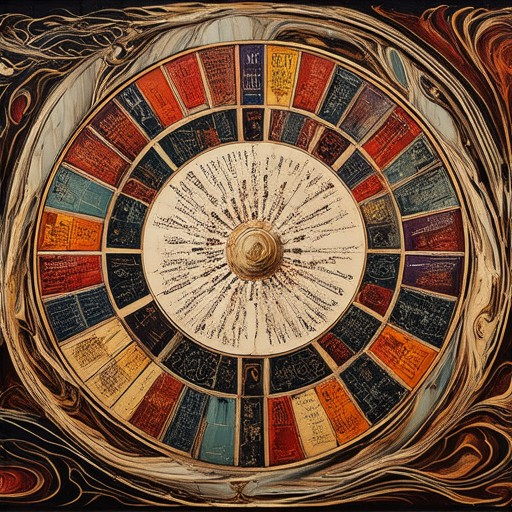Mastering the art of wine tasting goes beyond just sipping—true connoisseurs know that the aromas of wine reveal stories of terroir, grape varieties, and winemaking techniques. Whether you’re a seasoned enthusiast or new to the world of wine, understanding wine aromas can elevate your sensory experience and deepen your appreciation for fine wines. This comprehensive guide will walk you through the essential techniques, tools, and insights needed to identify and understand the complex world of wine aromas, including how to use a wine aroma wheel to navigate the nuances. From deciphering common wine aromas to employing the 20/20/20 rule, this guide offers practical tips and strategies to enhance your wine-tasting journey. By exploring the unique characteristics of primary, secondary, and tertiary aromas, you’ll learn what these scents signify about the wine’s origin, age, and flavor profile. With the right tools and practice, anyone can become a more confident and knowledgeable wine taster, unlocking the secrets hidden in every glass.
The wine aroma wheel is a valuable tool for enhancing your appreciation of wine by systematically analyzing its aromas. Here’s a structured approach to using it:
Understanding the Categories:
- Primary Aromas: These are derived directly from the grape variety. Examples include citrus (Sauvignon Blanc) and berries (Cabernet Sauvignon).
- Secondary Aromas: Develop during fermentation and are influenced by yeast activity. Examples include earthy notes in Pinot Noir and floral scents.
- Tertiary Aromas: Result from aging, including nutty, smoky, and caramelized notes, often seen in oak-aged wines.
Using the Aroma Wheel:
- Start with Primary Aromas: Begin by identifying the initial scent, such as citrus or berries.
- Transition to Secondary Aromas: Look for floral or earthy hints, which develop during fermentation.
- Explore Tertiary Aromas: Notice nutty or smoky notes, indicative of aging.
Regional Influences:
- Old World Wines (Europe): Typically exhibit earthy, complex tertiary aromas due to traditional practices.
- New World Wines (e.g., Australia, California): Often showcase vibrant primary and secondary aromas from diverse climates.
Interpretation Tips:
- Intensity: Strong, pronounced aromas may indicate high quality, though overripe notes could signal imbalance.
- Off-Odors: Detecting corked or faulty smells early is crucial to avoid a poor experience.
Practical Tips:
- Swirling and Sniffing: Aerating the wine by swirling helps detect more layers, though over-aeration may affect structure.
- Temperature: Serve wines at appropriate temperatures to enhance aroma perception.
- Practice: Use the wheel with various wines, starting with familiar ones like Sauvignon Blanc, then progressing to complex reds.
Descriptor Foundation:
Begin with common terms: citrus, berry, floral, earthy, spicy, and woody. Gradually incorporate more specific vocabulary as you gain experience.
Purpose:
The aroma wheel aids in systematic analysis, helping both novices and experts uncover wine nuances, fostering deeper appreciation and discussion.
By methodically navigating the aroma wheel, you can unlock new dimensions in wine appreciation, enriching both your sensory experience and your understanding of wine regions and styles.

What Are the Aromas in Wine Tastings?
Wine aromas are the unique scents that distinguish different varietals and vintages. These aromas are perceived through the olfactory system, making them a critical component of wine tasting experiences. The term “aroma” refers to the smells emitted by the wine when it is swirled and sniffed in the glass or on the palate.
Types of Wine Aromas
- Primary Notes : These are the most prominent and obvious aromas, often associated with the grape variety and growing region. Examples include:
- Citrus : Lemon, lime, and grapefruit notes are common in wines made from Sauvignon Blanc and other aromatic grapes.
- Floral : Roses, lavender, and violets are typical in wines like Gewürztraminer and Pinot Noir.
- Spice : Clove, nutmeg, and cinnamon are characteristic of Syrah and other rich red wines.
- Secondary Notes : These aromas develop during fermentation, aging, or blending and are often more complex. They can vary based on winemaking techniques and the environment. Examples include:
- Oak : Vanilla, coconut, and toast are indicators of barrel aging in Chardonnay and Cabernet Sauvignon.
- Herbaceous : Green bell pepper, basil, and thyme are common in young, unoaked whites like Viognier.
- Fruit : Ripe berries, cherries, and stone fruits are prominent in red blends and sparkling wines.
- Tertiary Notes : These subtle aromas develop over time and are influenced by the wine’s terroir. They can include:
- Earthy : Dust, earth, and mushroom notes are often found in Burgundy and Loire Valley wines.
- Animal : Leather, game, and wild animal hide are characteristics of aged Bordeaux and Rhône Valley wines.
- Mineral : Flint, chalk, and slate are typical in German Riesling and Sémillon wines.
How to Detect Aromas
- Swirl the Glass : Move the wine in the glass to release its aroma.
- Sniff Directly : Take a deep breath over the rim of the glass or insert your nose into the bottle opening.
- Identify Common Descriptors : Practice recognizing terms like citrus, floral, spicy, herbal, and earthy notes to better discern the wine’s profile.
Understanding and appreciating wine aromas enhances the tasting experience, allowing you to explore the nuances of different wines and their unique expressions of terroir and winemaking craftsmanship.
What Are the 5 S’s of Wine Tasting?
The 5 S’s of wine tasting are essential steps that help you fully appreciate the nuances of a wine. These steps are:
- Sniff : Take a moment to inhale the wine’s aroma. This step allows you to identify the wine’s bouquet and nose, giving insight into its quality and character.
- Swirl : Hold the wine glass by the stem and swirl the liquid to aerate it. This motion releases trapped aromas and enhances the flavor profile.
- Sip : Take a small sip of the wine to experience its taste. Pay attention to notes of fruit, spice, or other flavors.
- Spit : If you prefer not to keep the wine or are tasting in a group setting, spit it out after sipping. This prevents the wine from becoming diluted from excessive sipping.
- Slurp : Sometimes, people take a quick sip through their nose, creating a “slurp” sound. This method can help in certain tasting techniques and is commonly practiced in some cultural contexts.
These steps, when followed in order, provide a structured approach to wine tasting, allowing you to explore the wine’s aroma, flavor, and overall character effectively.

What is the 20/20/20 Rule for Wine?
The 20/20/20 rule is a simple yet effective guideline for optimizing the enjoyment of wine. Here’s a breakdown of how it works:
- Step 1: White Wines
- Remove white wines from the refrigerator 20 minutes before serving.
- Let them warm up slightly to reach optimal serving temperature, typically around 50-60°F (10-16°C).
- This allows the wine to develop proper aeration and bring out its aromas and flavors.
- Step 2: Red Wines
- Chill red wines in the refrigerator for approximately 20 minutes before serving.
- Red wines benefit from being served slightly cooler, ideally around 58-64°F (15-18°C), depending on the variety and age.
- Chilling reds helps mellow their flavors and enhance their bouquet.
- Step 3: Aerate in the Glass
- After pouring, let the wine sit in the glass for about 20 minutes.
- This allows the wine to oxidize, which opens up its aroma and flavor profiles.
- By giving the wine time to adjust, you ensure it is perfectly aerated and ready to enjoy.
Following the 20/20/20 rule ensures your wine is served at the optimal temperature and level of aeration, enhancing both its taste and aroma. This method works for all types of wine, from young, vibrant varietals to mature, barrel-aged bottles.
For more wine serving tips and expert advice, explore our wine tasting guides and learn how to elevate your wine experiences.

What Are the Different Types of Aroma in Wine?
The aroma profile of wine is a complex combination of scents that contribute to its overall character and appeal. These aromas can be broadly categorized based on their origin and development during the winemaking process:
- Primary Aromas: These are the inherent and specific smells found in the grape variety itself. They are often associated with the fruitiness of the wine and can vary depending on the terroir and growing conditions. Examples include citrus notes in Sauvignon Blanc or ripe berries in Cabernet Sauvignon.
- Secondary Aromas: These develop during the fermentation process and are influenced by yeast activity. They often include floral, spicy, and herbal notes. For instance, Pinot Noir frequently exhibits earthy and underbrush-like aromas due to its sensitive fermentation process.
- Tertiary Aromas: These are the result of extended aging, either in barrels or bottles. They can be influenced by oxidative processes and wood influence. Tertiary aromas may include nutty, smoky, or caramelized notes, often seen in wines aged in oak barrels.
The interplay between these aromatic components creates a unique and nuanced olfactory experience for wine drinkers. Winemakers carefully monitor factors like temperature control, yeast selection, and aging duration to shape the wine’s aroma profile. Fine Vines offers detailed guides on wine tasting and winemaking processes to help enthusiasts understand and appreciate these complexities.
What 4 Things Does Aroma Tell You About Wine?
When you smell wine, it provides valuable insights into its quality and character. Here’s what aroma reveals:
- Grape Variety : The primary scent often corresponds to the type of grapes used. For instance, citrus aromas may indicate Sauvignon Blanc, while fruitiness could suggest Chardonnay.
- Winemaking Techniques : Secondary scents, such as vanilla from oak barrels or floral notes from yeast, reveal the methods used during production.
- Quality Level : Intense aromas typically signify higher quality, as they reflect greater concentration and complexity.
- Aging Process : The bouquet evolves with age, with young wines showing vibrant fruitiness and older wines developing earthier, more complex profiles.
These cues help discern the wine’s origin, craftsmanship, and maturity.

Aromatic Scents Explained
Aromatic scents are a fascinating world of fragrance that captivate our senses and evoke emotions. These scents are carefully crafted to blend harmonious notes, creating complex and captivating olfactory experiences. Below is a breakdown of the most common types of aromatic scents found in perfumery:
1. Floral Aromatics
- Lavender : Known for its calming properties, lavender is a versatile floral note often used in relaxation and spa products.
- Rose : A timeless fragrance that symbolizes love and elegance, rose appears in both floral and powdery perfumes.
- Jasmine : Sweet and exotic, jasmine is a popular floral note in oriental-inspired fragrances.
2. Spicy Aromatics
- Cinnamon : Warm and inviting, cinnamon adds warmth to winter perfumes and is a staple in gourmand scents.
- Nutmeg : Rich and earthy, nutmeg complements spicy and woody fragrances beautifully.
- Cloves : Clove offers a bold, masculine presence often used in holiday and tobacco-themed perfumes.
3. Earthy Aromatics
- Patchouli : A groundy, smoky scent that evokes a sense of mystery, patchouli is a cornerstone of chypre fragrances.
- Sandalwood : Warm and sensual, sandalwood creates a calming atmosphere and is widely used in luxury perfumes.
- Vetiver : Often described as forest-like, vetiver provides depth and longevity in fragrances.
4. Citrus Aromatics
- Lemon : Bright and refreshing, lemon zest adds zesty energy to colognes and fresh perfumes.
- Lime : Similar to lemon, lime offers a tartness that balances sweetness in fragrances.
- Bergamot : A citrusy note with floral undertones, bergamot is a key component in many classic perfumes.
5. Woody Aromatics
- Cedar : Elegant and sophisticated, cedar wood adds sophistication to both masculine and feminine fragrances.
- Pine : Fresh and crisp, pine needles bring a breath of nature into perfumes.
- Teak : Smooth and subtle, teak wood offers a refined aroma often used in high-end perfumes.
6. Green Aromatics
- Basil : Fresh and herbaceous, basil is a versatile green note used in both traditional and modern perfumes.
- Parsley : Light and airy, parsley adds a refreshing element to fragrances.
- Thyme : With a slightly medicinal touch, thyme enhances spicy and herbal scents.
7. Fruity Aromatics
- Apple : Sweet and juicy, apple fruit is a popular choice for fruity perfumes.
- Pear : Soft and delicate, pear adds a tender dimension to fragrances.
- Mango : Tropical and vibrant, mango brings a sunny, exotic vibe to perfumes.
By understanding these aromatic scents and how they interact, perfumers can create intricate and memorable fragrances tailored to individual preferences. Whether for personal use or to elevate a space, aromatic scents continue to play a vital role in shaping our sensory experiences. For more insights into the art of perfumery, explore our guide to understanding fragrance notes and their emotional impact. Learn More



0 Comments